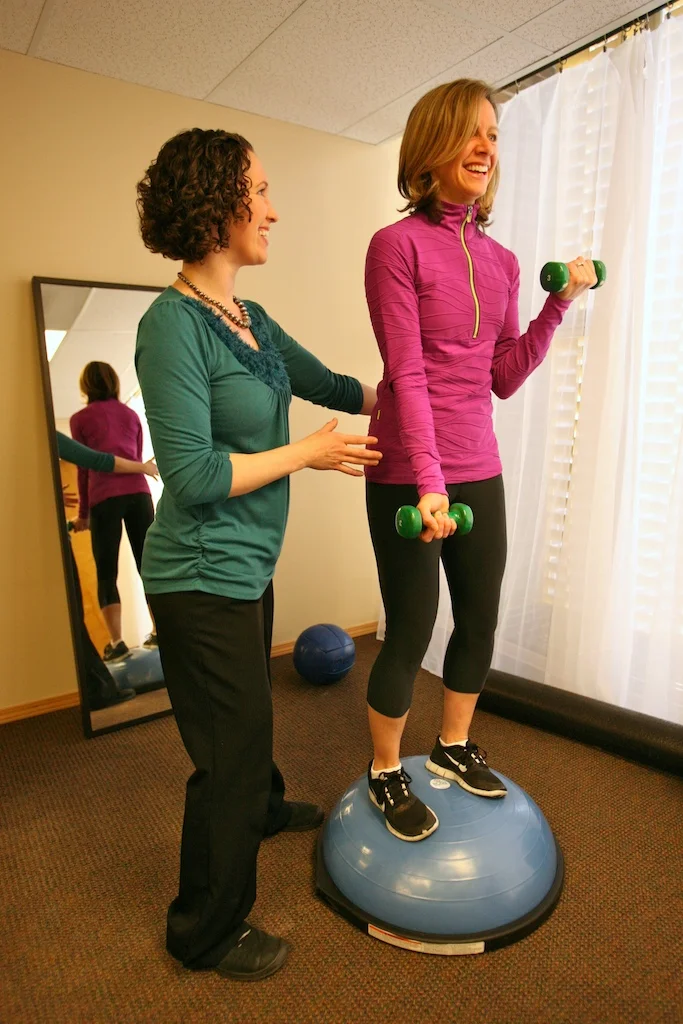Balance & Fall Prevention Program
If you have experienced recurrent lower extremity injuries (for example, ankle sprains, knee sprains, etc.) or if you have noticed over the years that the uneven sidewalks of Portland have made you feel unsteady, you may have a balance issue that we can help address. A specialized balance and fall prevention program can greatly assist with decreasing those feelings of unsteadiness and drastically reduce the risk of falling.
Balance is affected and perceived by multiple areas of the body. This includes the vestibular system (inner ear), vision, and proprioception (the receptors in your joints, ligaments, and muscles). These systems are all conveyed through nerves and perceived by the brain. When injured or affected by disease and aging, the structures that affect balance can be greatly altered and reduce input to the brain. For instance, did you know that if you experience a musculoskeletal injury, many times you will be left with a faulty proprioceptive system that is not able to appropriately react for you during dynamic everyday or recreational activities? Decreased reaction time can lead to a cycle of re-injury that is hard to get out of.
As we age, our circle of balance gets smaller and smaller, thus increasing our likelihood of falls. Falls can result in broken bones which can be detrimental for the older, geriatric population. However, numerous studies have emphatically shown that if you start a balance program and continue to focus on tasks that challenge your ability to stay upright, your balance can improve.
Our physical therapists are skilled in neuromuscular re-education and are able to create individualized balance programs based on your needs and goals. We also will track your progress and measure your risk of falling through standardized assessments. Specific balance tests are performed during the beginning, middle, and end of your physical therapy program. Our physical therapists enjoy discussing your progress while explaining the results of your tests. That way, both you and your therapist can know exactly where you are with your balance progress.

